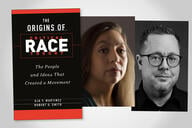You have /5 articles left.
Sign up for a free account or log in.
Politicians (and plenty of educators) talk about the “skills gap” and suggest ways that higher education can do a better job of preparing students for careers. The authors of a new book very much want students to go on to successful careers. But their research in Wisconsin suggests that both employers and students need more from higher education. Their findings are based on in-depth interviews with employers and observation of classrooms that mix skills training specific to careers with the soft skills that many fear are being ignored in the current environment.
Beyond the Skills Gap: Preparing College Students for Life and Work (Harvard Education Press) is the result of this research. The book is by Matthew T. Hora, assistant professor in adult teaching and learning at the University of Wisconsin at Madison, with Ross J. Benbow, an associate researcher with the Wisconsin Center for Education Research at the University of Wisconsin at Madison, and Amanda K. Oleson, an education scholar focused on workforce pathways. Hora and Benbow responded to questions via email. Their responses have been condensed slightly for space.
Q: Many books with “skills gap” in the title tend to advocate that higher ed shift to a vocational orientation. Your book is different. How are you trying to redefine the skills gap?
A: We’re not necessarily attempting to redefine the skills gap idea, but instead choose to reject it altogether in favor of a counternarrative focused on a systemic and teaching-centered approach to dealing with the problems facing today’s college students, the higher education sector and society at large. The notion of a skills gap is problematic because it offers an overly narrow and inaccurate diagnosis of what ails the labor market as well as the role that higher education can and should play in society. It pins the blame for employer challenges with hiring (and sluggish economic growth) solely on higher education, especially the arts and humanities.
While some aspects of the skills gap narrative are true -- occupational shortages do exist in fields like nursing and career pathways could be better articulated for many college students -- many of its other premises are simply wrong. Hiring challenges are often due to low wages, the responsibility of employers to provide training is rarely mentioned, and labor economists point to issues with overly stringent hiring criteria and inadequate demand. If the skills gap were merely an academic debate, that would be one thing, but it is informing policy at the state and national levels, where the narrative of a failed higher education system dovetails with an ideologically driven attempt to reform the sector to operate more like private businesses.
Perhaps the biggest problem with the skills gap rhetoric, which unfortunately has become a bipartisan rallying cry, is that it ignores what our research shows is the central issue at hand when it comes to preparing college graduates for the challenges of the 21st century -- that of teaching and learning. The methods educators (and workplace trainers) use to design and teach their courses -- whether face-to-face or online, or in a certificate or bachelor’s program -- play a significant role in determining whether students and employees develop robust technical expertise, cultivate problem-solving and communication skills, transfer abstract knowledge to real-world situations, and foster a lifelong aptitude for self-directed learning. Thus, we aim to reframe the debate to focus on ensuring that all college students have access to experiential, inquiry-based courses that will not only help them get a job, but also expand their minds and foster a critically thinking, well-educated electorate …. So, many pieces of the puzzle are in place in terms of creating a learning-centered higher education, but what is missing is state support and a systems-oriented vision for change that links each of these areas of expertise and programming, celebrates teachers instead of blames them, and places the vocational, intellectual and civic purposes of education on equal footing.
Q: For your book, you interviewed employers in manufacturing and biotech -- and they didn’t seem to be saying the same things politicians (including your governor) talk about. What do employers really want?
A: When politicians talk about what employers want, it typically involves complaints about art history and political science majors, the paucity of young people entering the skilled trades, and the subsequent need to expand educational programs in “high-demand” occupations like computer programming, welding and nursing. It is certainly important to deal with bottlenecks in the pathways for occupations, but conversations about supply and demand address only one aspect of a much more complex issue. Besides the importance of instructional design that we mentioned earlier, we found that even with the “right” credentials on paper, graduates who do not have a certain combination of desirable skills and social capital may very well have a difficult time finding an entry-level job and developing a career over the long term.
This is because employers we spoke with described their ideal candidate as a hardworking, technically astute individual with strong problem-solving and communication skills who can work effectively as part of a team. Certainly, employers need applicants with basic technical training in their field, whether it is molecular biology, welding or quality engineering. But as one executive said, you can look perfect on paper and have the right credentials, but that alone won’t get you the job. Why is that? Because if someone can’t also work on a team, communicate verbally and in writing, be a creative problem solver, and continually work hard and learn new things, they ultimately act as a drag on company productivity and profit, whether they are technically qualified or not.
Ultimately, all of these issues point to the need to think more deeply about the ways we can best craft learning environments and advising services so students acquire a diversified repertoire of skills -- whether in a boot camp or a sequence of courses for an associate or bachelor’s degree -- that can put them in the best position to both get that first job upon graduation and then to succeed in their chosen careers 10 to 20 years from now.
Q: Many politicians seem to argue that liberal arts and general education are fine for the affluent, but that low-income students just need job training. What’s wrong with that view?
A: Part of the skills gap rhetoric has been that the multidisciplinary, self-directed educational model -- which is a foundational idea going back to the Age of Enlightenment in Europe and Thomas Jefferson’s plan for the University of Virginia in the U.S. -- is neither useful in vocational terms nor should it be subsidized by the state. Here in Wisconsin, that argument has been leveled against art history, political science and philosophy majors in particular, and about the four-year liberal arts degree in general. The introduction of differential tuition -- in which students in fields like art history pay more than those in computer science or nursing -- would actually exacerbate the stratification in areas of study by income, essentially making liberal arts degrees or arts and humanities education the province of the elite. As Anthony Carnevale recently observed, a system that already is out of reach for many low-income students and students of color could potentially become even more so.
Aside from the policy’s propensity to intensify existing discrimination and exclusion, its logic is flawed on multiple levels. First, there is a widespread misunderstanding that the liberal arts is synonymous with the arts and humanities. Instead, the tradition also encompasses science and mathematics, and underpins programs of study in a number of disciplines considered to be high demand in the labor market.
Second, removing courses in the social sciences, arts and humanities from these so-called high-demand programs, whether in a two-year technical college or a four-year bachelor’s program, would be counterproductive. Such courses not only cultivate the kinds of communication and critical-thinking skills that are valued by employers, but they also broaden a person’s experience through the engagement with other cultures, ideas and arguments. In fact, some of the most eloquent and impassioned defenses of general education in our study came from technical college instructors, who recognize that a handful of technical courses are not sufficient to cultivate the breadth of competencies that employers want and that students will need to succeed in life and work, particularly in an increasingly diverse and globalized workplace.
Finally, such critiques of general education reflect a fundamental misunderstanding of the link between education and occupations. Students in fields such as history, political science and even biology go into a variety of occupations that are not closely tied to their credential, because the breadth of knowledge, interpersonal skills and ways of thinking that their degree confers opens doors to a range of jobs and fields. Ultimately, the notion that an in-depth, multidisciplinary education should be restricted to those who have been born into the cultural and social elite is both offensive and wrongheaded.
Q: What do you see as the key soft skills that students need -- but that many lack?
A: Unfortunately, in the study that led to this book, we didn’t collect extensive data on student learning or student experiences making the transition from college to work. For that reason, we can’t speak directly to skills that they may be lacking except through the eyes of educators and employers. This is something that we’re now remedying with a new four-year study exploring similar issues in Denver, Houston, Seattle and Raleigh, N.C.
But the term “soft” skills, we think, steers discussions in interesting ways. One of the tricky things about skills-related educational debates is terminological confusion. While some people use the distinguish skills between those that are hard and those that are soft, for instance, others use the term “noncognitive” to refer to what many think of as soft skills. Luckily, advanced typologies such as National Research Council’s 21st-century competency framework and the Department of Labor’s Occupational Information Network (known as O*Net) have broken skills down into even more nuanced and complex categories, ultimately helping us linguistically avoid the perception that soft skills are any more easy to learn or less important than hard skills.
It was in response to such arguments that we decided to refer to important competencies as “21st-century habits of mind” in the book. It isn’t a perfect solution, but it highlights the fact we’re talking about a complex compendium of skills, knowledge and abilities that are equally essential.
Terminological disclaimers aside, when it came to the types of competencies employers and educators felt were lacking in students, many explicitly mentioned interpersonal competencies, like communication and teamwork, and intrapersonal ones like self-directed learning and work ethic. Particularly in manufacturing, perhaps the most common complaint we heard from employers was about the lack of a solid work ethic, especially the younger employees. The repeated mention of this competency was especially fascinating to us because it highlighted the fact that colleges can only do so much when it comes to instilling skills supposedly in demand in the job market.
Work ethic, indeed, is a deeply cultural concept, often personified in a combination of beliefs and dispositions shaped by parents, peers and the broader culture. Interestingly, employers and educators also spoke of the need for such nontechnical competencies to be embedded in specific disciplines or fields, such that one knew how to communicate in a biotech lab or collaborate in a lean manufacturing setting.
Q: You describe classrooms that blend job-related skills with the teaching of lifelong soft skills. Would you summarize what you saw in one of the classrooms and why that may serve as a model for others?
A: One of the educators we feature in the book is Tim Wright, who at the time of our study was an instructor in a newly founded aerospace composites program at a technical college in Superior, Wis. Tim was hired to start up the program because an airplane manufacturer named Kestrel had received considerable tax breaks to build a local plant. The plant, many thought, would not only create nearly 600 area jobs, but also make the Superior-Duluth area a hotbed of small plane manufacturing. Such a hotbed would need workers trained in composites. With Kestrel’s support, Tim created a program, complete with a classroom that mimicked the shop floor of an aerospace company, and taught his students about the chemistry of composite materials, how to repair airplane wings and so on.
But for Tim, it wasn’t just about teaching his students technical skills so that they could get a job in the local aerospace industry. Because the aerospace industry was so cyclical and job security unpredictable, he told us that he would be remiss if he didn’t teach in a way that their knowledge and aptitudes could be applied to other fields, like sporting goods or the automotive industry. This wasn’t just about his giving his students career advice so that they could get that first job out of school, but in emphasizing certain approaches to work itself that he felt would serve them well throughout their lives.
On the first day of class he distributed “Tim’s 10 Commandments,” which included proclamations about craftsmanship and the importance of keeping one’s workspace neat, tools clean, and generally being well organized. Tim also had strong expectations for students with regards to being on time and handing in assignments when they were due, working in small groups to solve hands-on problems, critiquing one another’s work, and ensuring that communication and collaboration were part of the learning environment. This model of teaching and learning is not unusual, and there are many examples of innovation in design-based education, digital pedagogy and STEM education that could and should be widely adopted.
The story we tell about Tim’s classroom doesn’t end well, however. The promised jobs from Kestrel never materialized, and the program closed in 2015 due to a lack of students. This is a cautionary tale in linking academic programming too closely with meeting the needs of a single company or industry, and in framing debates about higher education solely in terms of jobs and vocational training. Luckily, Tim had begun to cultivate in his students a set of competencies and dispositions that should serve them well in any field requiring composite skills, and also in their lives in general, now and into the future.




